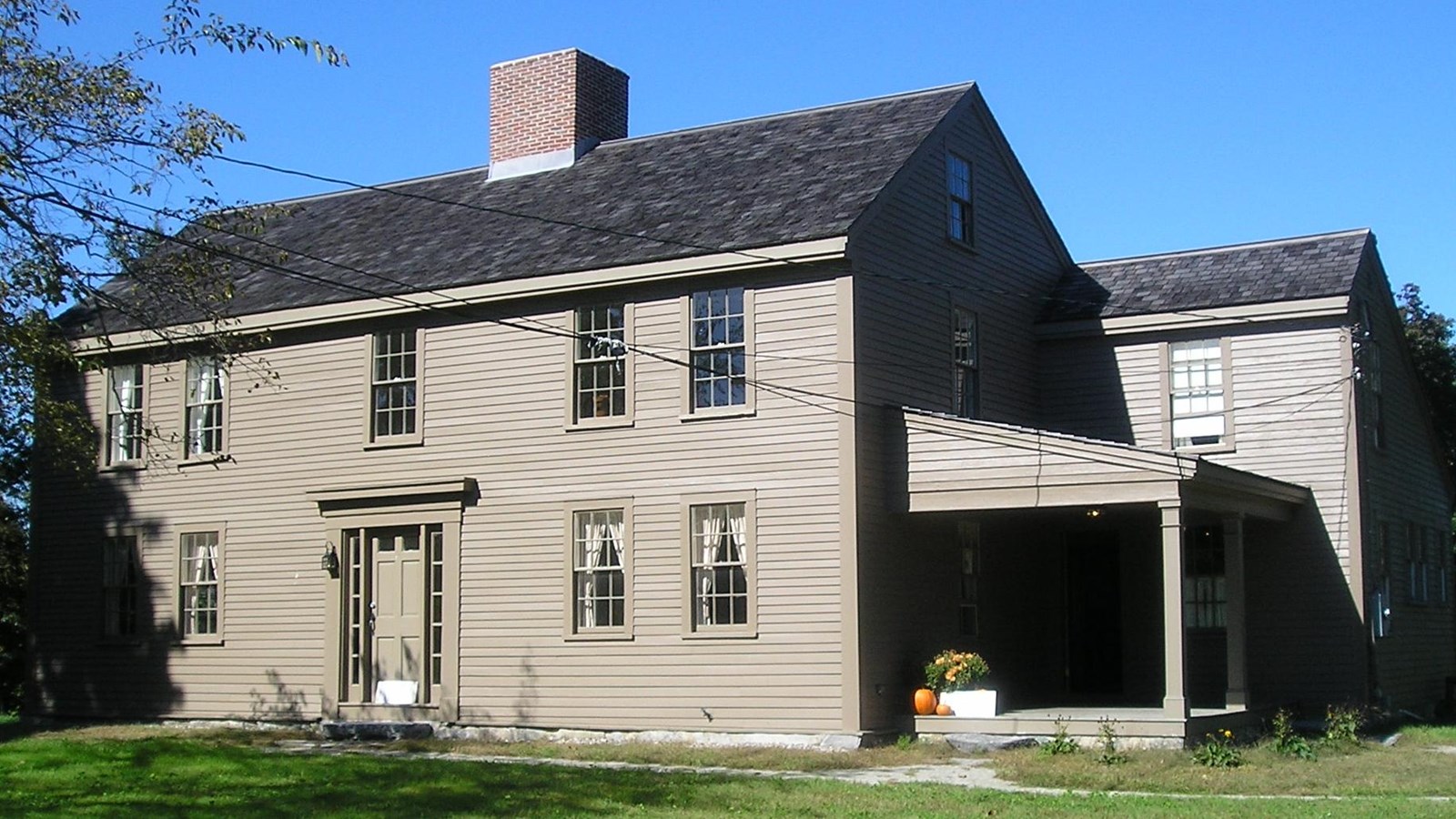Last updated: January 18, 2023
Place
Samuel Brooks House, 1692

NPS Photo
Quick Facts
Location:
1175 Lexington Road, Concord MA 01742
Significance:
Samuel Brooks was a veteran of the battle on April 19, 1775. His home, which he shared with his mother, sits on the Bay Road. The British Army passed by here on their way to Concord and back again during their fighting retreat to Boston.
OPEN TO PUBLIC:
No
Amenities
4 listed
Historical/Interpretive Information/Exhibits, Parking - Auto, Scenic View/Photo Spot, Trailhead
Samuel Brooks’ father Samuel inherited the property in 1729. The elder Samuel built significant additions onto the original 1692 one-story house, adding a second story and an ell on the northeast side of the house. Today, the house includes the east porch that was added in 1750. The elder Samuel died in 1758. As his father’s first-born son, Samuel received significant landholdings to pass on to potential heirs but never had children of his own. When Brooks married Mary Bateman Flint in 1781, however, he became a stepfather to seven children. Though it is unclear whether any of the children followed Mary to the home of Samuel Brooks, when he died in 1811 Brooks left is property to Mary’s youngest son, Nehemiah.
Nehemiah Flint experienced what was a common difficulty of post war Concord, as the youngest of the many Flint sons, there was too little land to divide in inheritance. Because he was able to inherit land from Samuel Brooks, who refers to Nehemiah as his “son-in-law,” an eighteenth century term for “stepson,” he was fortunate. Nehemiah Flint and his wife Hannah remained in the house until 1836.The house changed hands several times thereafter, including a long period in the Hartwell family. Despite the property’s turnover, all the owners were related to the Brooks family in some way, until its purchase by the National Park Service in 1963.
The Samuel Brooks farm included roughly sixty acres, twice the size of the average farm in the area, and included some tillage, hayfields, pasture, and orchard. Brooks also grew corn, barley, and rye, and undoubtedly had a kitchen garden. The farm also had livestock. In 1749, the family owned a horse, four oxen, eight cows, and three pigs.
When the regulars were sent out from Boston on the morning of April 19, 1775, they followed the Bay Road to Concord. This route took them through the center of Brooks Village. If any of the families were still in their houses when the regulars marched by at about 6:00 AM, they would have seen the soldiers “marching in fine order,” their bayonets “glistening in the sunlight like a field of waving grain,” as one witness later described it. By 1:00 that afternoon, the regulars were passing by again on their way back to Boston after the engagement at Meriam’s Corner. Loammi Baldwin of the Woburn Militia later reported that Woburn rested upon Brooks Hill until they saw the regulars approaching. Baldwin then moved his men into a wooded area just east of Brooks Village where the Bay Road took a sharp turn. As the regulars reached what is now known as Bloody Angle, they were caught in a heavy crossfire from Baldwin’s men on the east, and troops from several other towns that had crossed Joshua Brooks’ tannery field on the west. Eight British soldiers and three Americans died, and many others were wounded at the edge of Brooks Village that day.
In 1775, at the age of 36, Samuel Brooks would have been drilling regularly with the Concord militia. Unfortunately, the records of the Concord militia companies are incomplete for April 19, but it is more than likely that Samuel joined his family and neigbors that day. In 1777, however, Samuel was drafted into a militia company to support the Continental Army, but he was allowed to pay ten pounds “in lieu of service.” This was common at that time for men like Samuel, who was the sole caretaker for his widowed mother.
